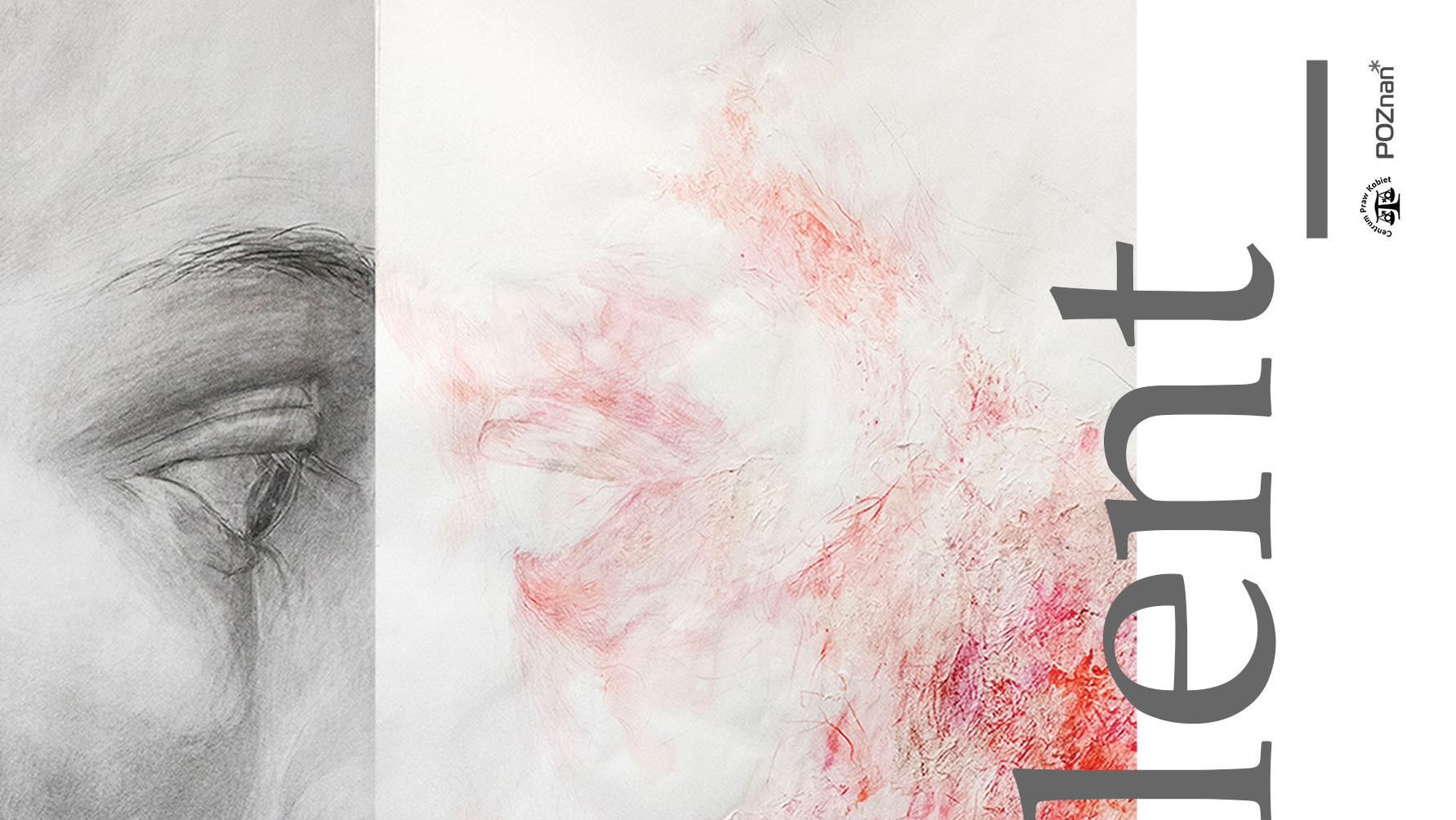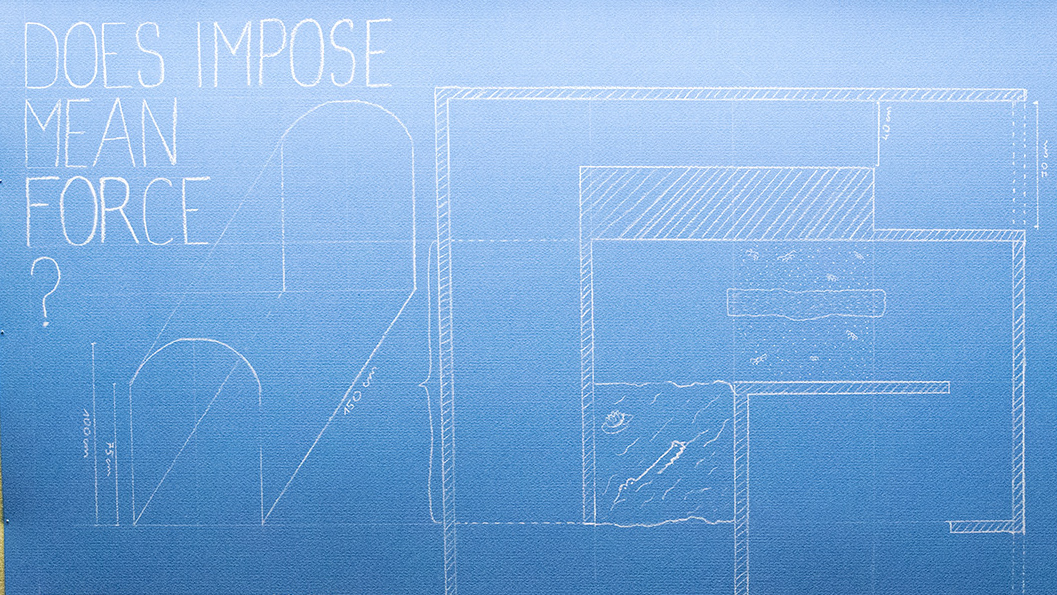Kamila Kobierzyńska - “As the Rust Kisses the Moon”
Kamila Kobierzyńska is a visual artist specialising in photography and art fabrics. Kamila
Kobierzyńska delves into the realm of profound artistic research encompassing themes of individual prosthetic memory, generational post-memory and identity. Kamila Kobierzyńska’s artworks primarily revolve around photographic techniques, some of which include original cyanotypes, carefully crafted by the artist on delicate silk. Silkworm’s shapes that emerge from her artworks hold significant anthropological symbolism, reflecting her multidimensional exploration of human heritage. Notably, one of her cyanotypes portrays a form derived from Drakensberg cave paintings. The elusive life span of the flying insect that was preserved miraculously over tens of thousands of years, serves as a poignant reminder of the fragility inherent in humanity, especially when observed from a cosmic perspective. The moth motif that covers photosensitive fabric outstretched under the ceiling incorporates these threads in the process of its creation. Rusted shape of the animal pressed into material connotes the delicate puff on the insect’s wings that was immortalised in the cave’s stone. This distant perspective is captured through various transformations of human development as a species. One such example is evident in her scan of the sphenoid bone, which she uses to accentuate the insect-like presence within us. The perspective she chooses for this artwork conveys a sense of the moth-like shape of the bone which seems to be advancing towards the viewer. This evokes in us the sense of the moth's azimuth, directing us towards the Moon.
Kamila Kobierzyńska is a visual artist specialising in photography and art fabrics. Kamila
Kobierzyńska delves into the realm of profound artistic research encompassing themes of individual prosthetic memory, generational post-memory and identity. Kamila Kobierzyńska’s artworks primarily revolve around photographic techniques, some of which include original cyanotypes, carefully crafted by the artist on delicate silk. Silkworm’s shapes that emerge from her artworks hold significant anthropological symbolism, reflecting her multidimensional exploration of human heritage. Notably, one of her cyanotypes portrays a form derived from Drakensberg cave paintings. The elusive life span of the flying insect that was preserved miraculously over tens of thousands of years, serves as a poignant reminder of the fragility inherent in humanity, especially when observed from a cosmic perspective. The moth motif that covers photosensitive fabric outstretched under the ceiling incorporates these threads in the process of its creation. Rusted shape of the animal pressed into material connotes the delicate puff on the insect’s wings that was immortalised in the cave’s stone. This distant perspective is captured through various transformations of human development as a species. One such example is evident in her scan of the sphenoid bone, which she uses to accentuate the insect-like presence within us. The perspective she chooses for this artwork conveys a sense of the moth-like shape of the bone which seems to be advancing towards the viewer. This evokes in us the sense of the moth's azimuth, directing us towards the Moon.
Julia Królikowska - “Linear Density of Synthetic Fibres”
Paintings of Julia Królikowska revolve primarily around three interconnected subjects: corporeality, sexuality and social structures. Her artworks form a complex continuation of a concept she initiated early in her artistic career, which involves a reflective exploration of the imposed external perspectives on the human body. Within Julia’s works, two specific issues receive considerable attention: the societal perception of women bodies and bodies affected by illness. Julia selects a distinctive type of canvas for her art, using material typically utilised in the production of tights and stockings. Over this surface, she creates organic shapes, employing fleshy colours and delicate forms reminiscing body hair. The presence of these elements on fetishised material conveys a sense of abjection, charging her works with a “profound” impact. Through conscious juxtaposition of these confronting elements, Julia imparts her paintings with emancipating power, further amplified by her natural inclination towards visualising them through organic abstraction. This artistic approach creates a counter-imposing space, where contemplation and introspection about these sensitive topics can freely develop and flourish.
Paintings of Julia Królikowska revolve primarily around three interconnected subjects: corporeality, sexuality and social structures. Her artworks form a complex continuation of a concept she initiated early in her artistic career, which involves a reflective exploration of the imposed external perspectives on the human body. Within Julia’s works, two specific issues receive considerable attention: the societal perception of women bodies and bodies affected by illness. Julia selects a distinctive type of canvas for her art, using material typically utilised in the production of tights and stockings. Over this surface, she creates organic shapes, employing fleshy colours and delicate forms reminiscing body hair. The presence of these elements on fetishised material conveys a sense of abjection, charging her works with a “profound” impact. Through conscious juxtaposition of these confronting elements, Julia imparts her paintings with emancipating power, further amplified by her natural inclination towards visualising them through organic abstraction. This artistic approach creates a counter-imposing space, where contemplation and introspection about these sensitive topics can freely develop and flourish.
Anna Myszkowiak
The youngest exhibited artist, Anna Myszkowiak, focuses on the issues of sculpture and space. Her choice of artistic materials (resin, wax, beet juice) often mirror materials found in natural environment which she appropriates to create objects resembling living organisms captured in the process of transformation. Through these materials, she reflects on existential and body shifts, settling it both in the context of contemporary society as well as in individual psychological development. Sometimes, she becomes the subject and model for the work, which gives her opportunity to simultaneously “become part” of the art piece. On the other hand, the process of later work in material enables her to objectify herself from what was once her. Works made by Myszkowiak’s hands have intensively organic dimension that we instinctively decode with the natural act of morphing and creating new states and subjects. Orientation towards nature’s visuality gives the viewer an opportunity to glance into new aesthetics that break with the “classical” ones. Bodily aspect of her objects is sometimes enhanced by fleshy objects captured in contrapposto, dynamising the haptic effect. Their immersive character gives us the opportunity to become surprised with their biological intensity in the first place, only to discover new qualities and the beauty emerging from them in the second.
The youngest exhibited artist, Anna Myszkowiak, focuses on the issues of sculpture and space. Her choice of artistic materials (resin, wax, beet juice) often mirror materials found in natural environment which she appropriates to create objects resembling living organisms captured in the process of transformation. Through these materials, she reflects on existential and body shifts, settling it both in the context of contemporary society as well as in individual psychological development. Sometimes, she becomes the subject and model for the work, which gives her opportunity to simultaneously “become part” of the art piece. On the other hand, the process of later work in material enables her to objectify herself from what was once her. Works made by Myszkowiak’s hands have intensively organic dimension that we instinctively decode with the natural act of morphing and creating new states and subjects. Orientation towards nature’s visuality gives the viewer an opportunity to glance into new aesthetics that break with the “classical” ones. Bodily aspect of her objects is sometimes enhanced by fleshy objects captured in contrapposto, dynamising the haptic effect. Their immersive character gives us the opportunity to become surprised with their biological intensity in the first place, only to discover new qualities and the beauty emerging from them in the second.
Grzegorz Śliwiński








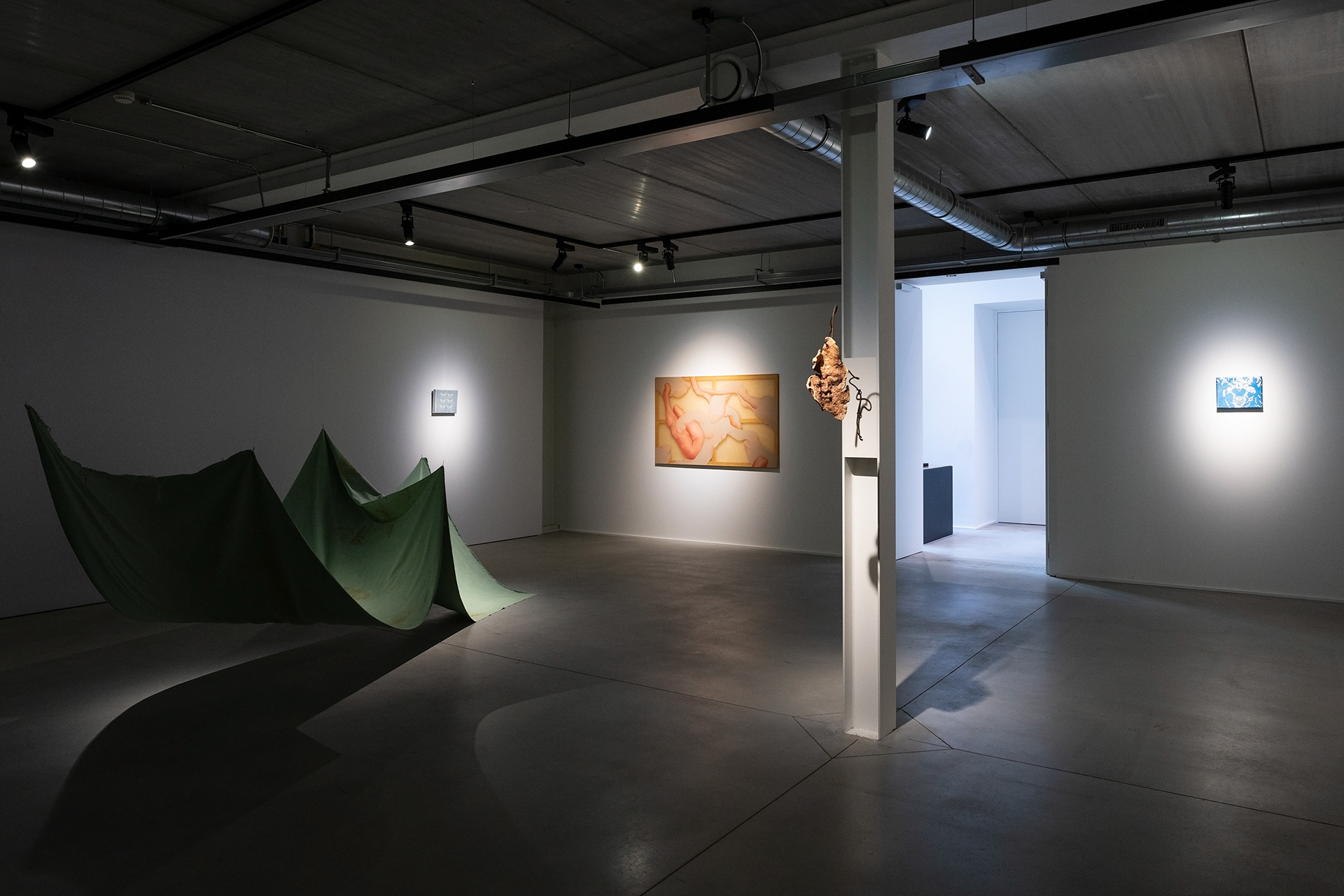
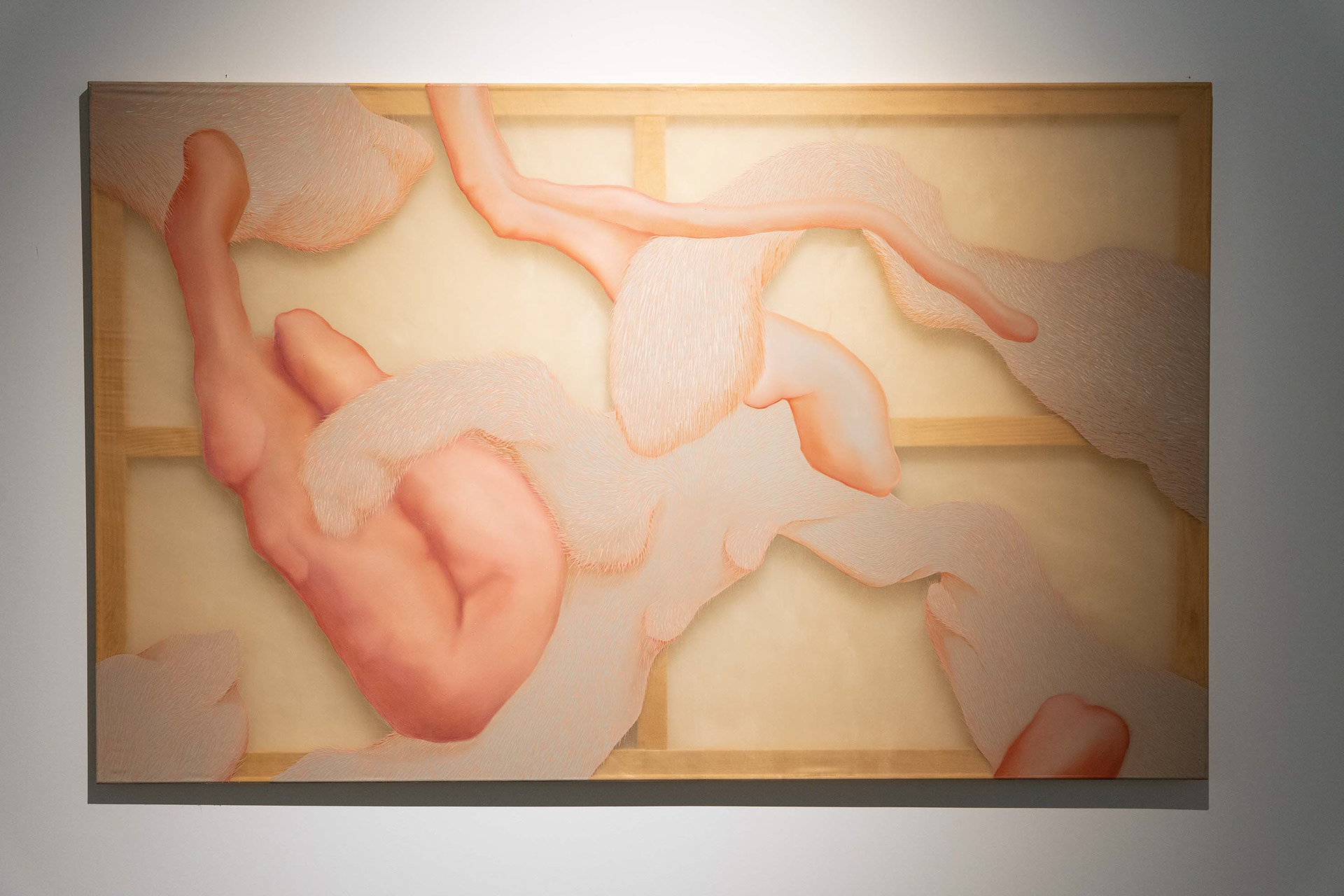




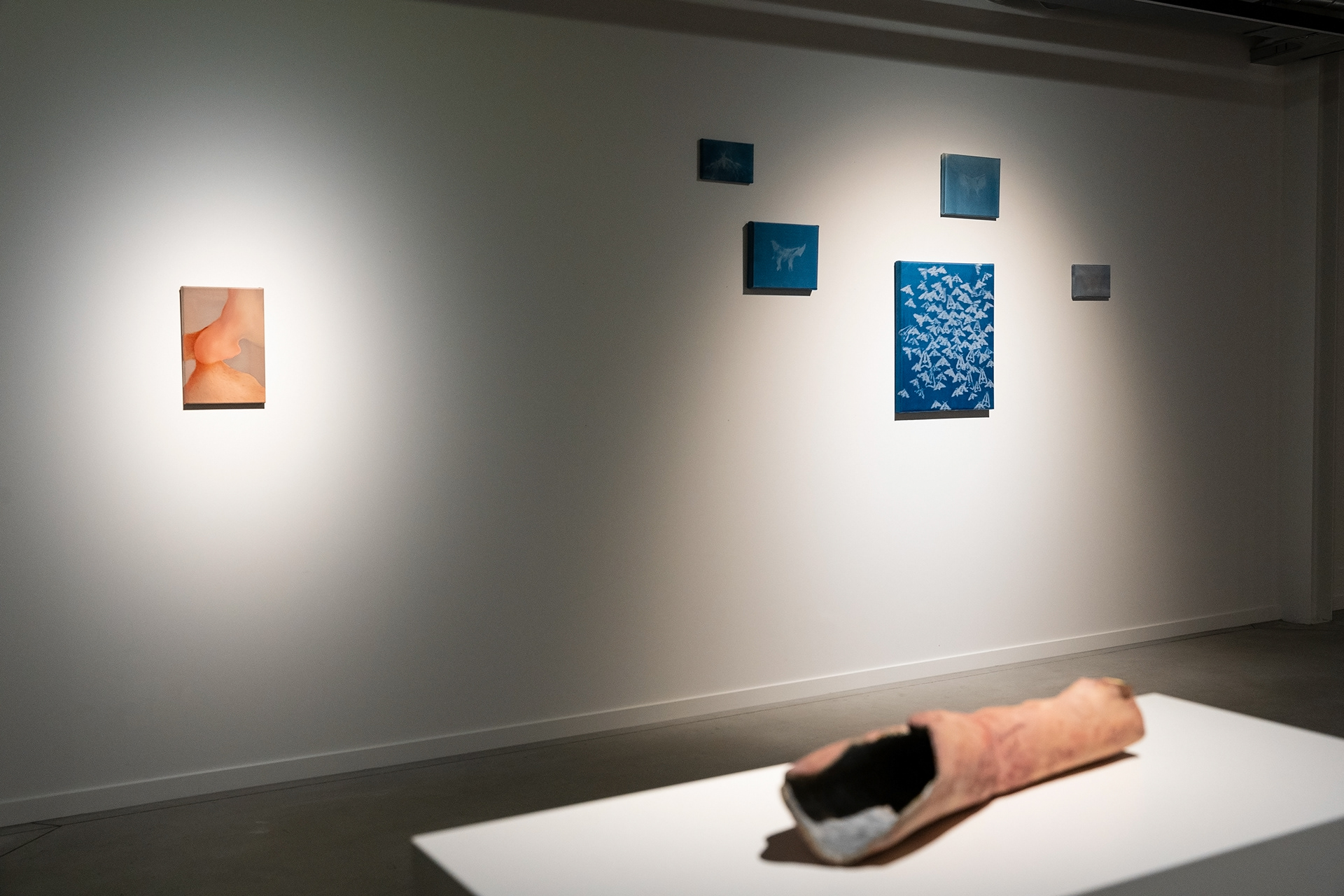

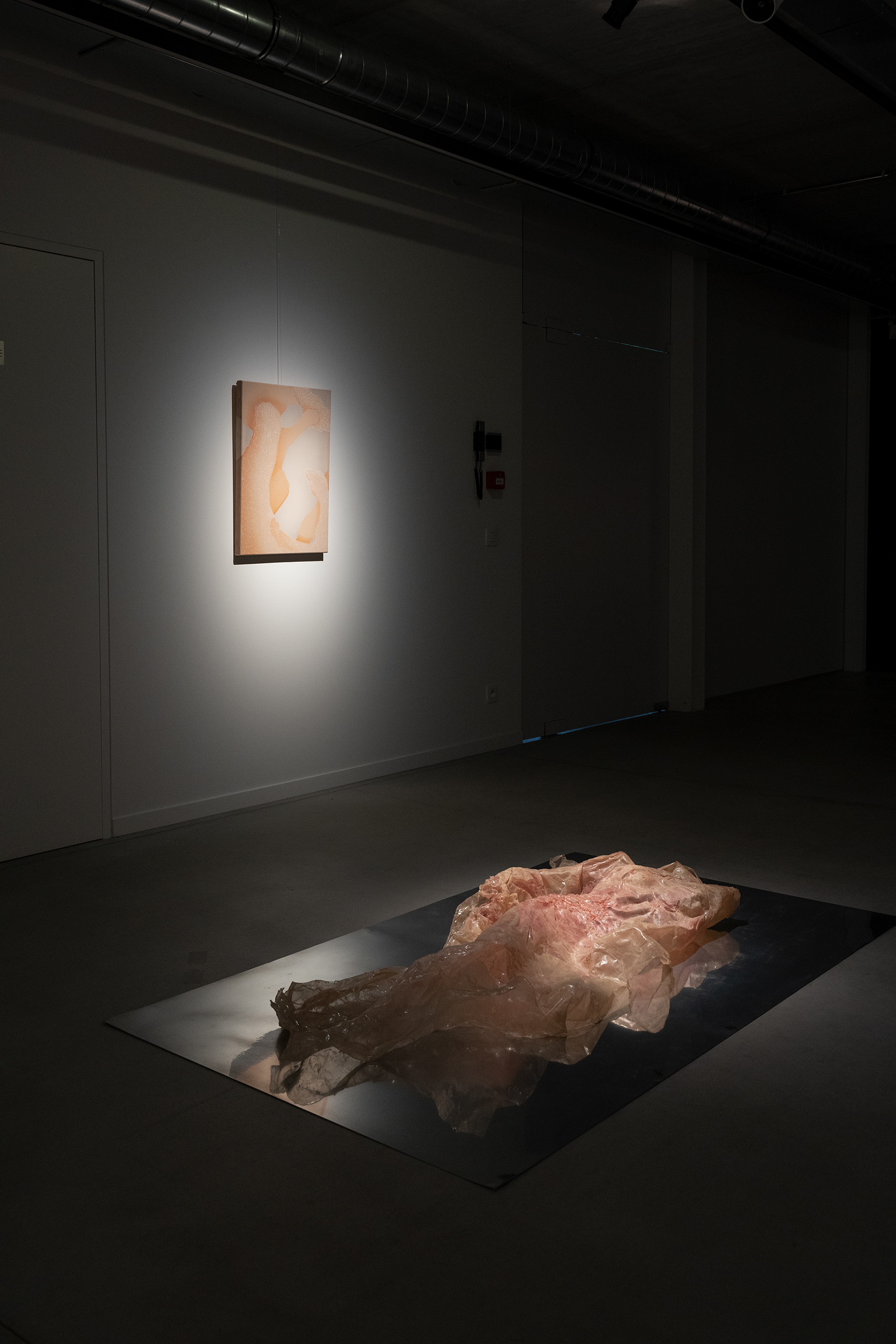







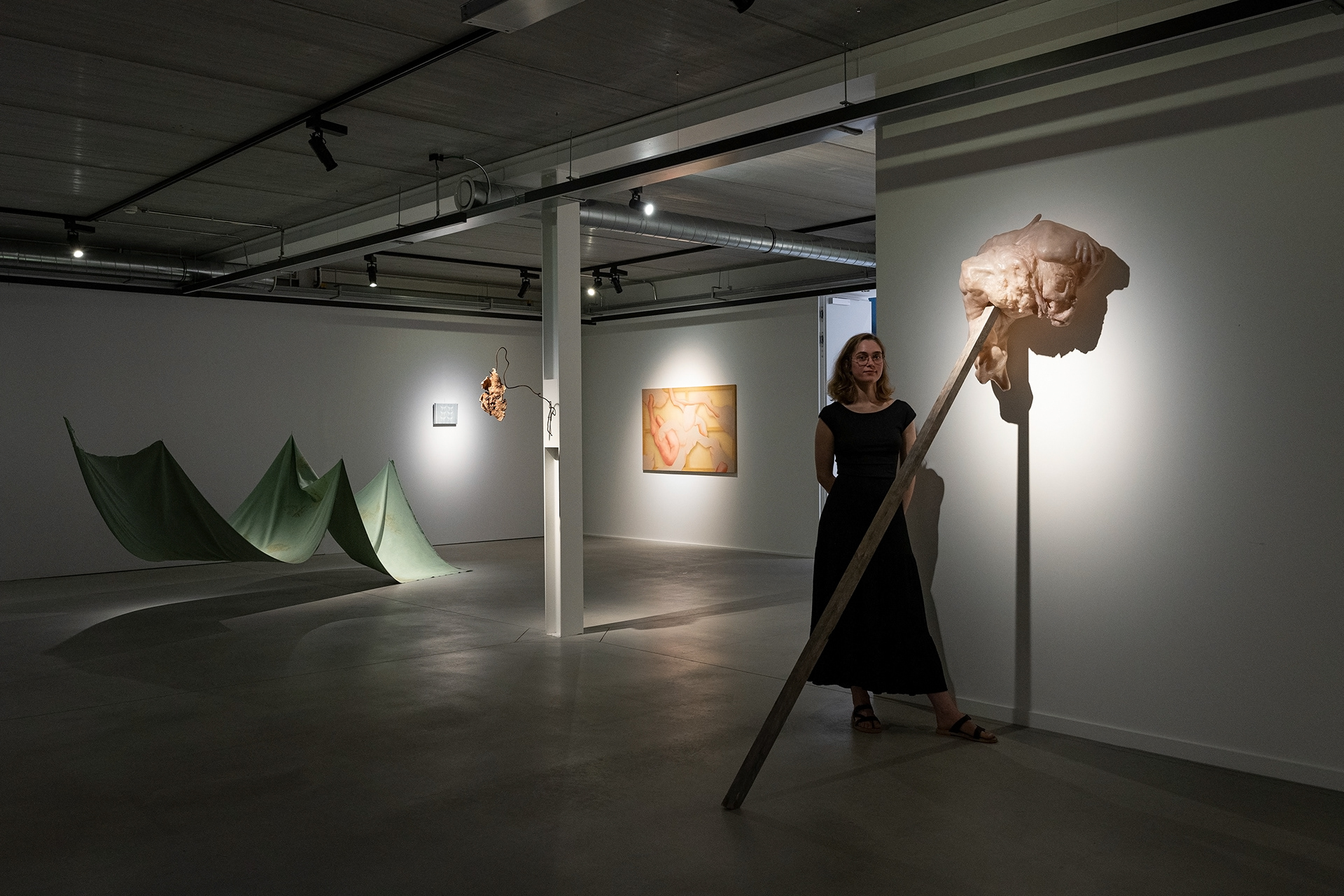


photos by Kamila Kobierzyńska


